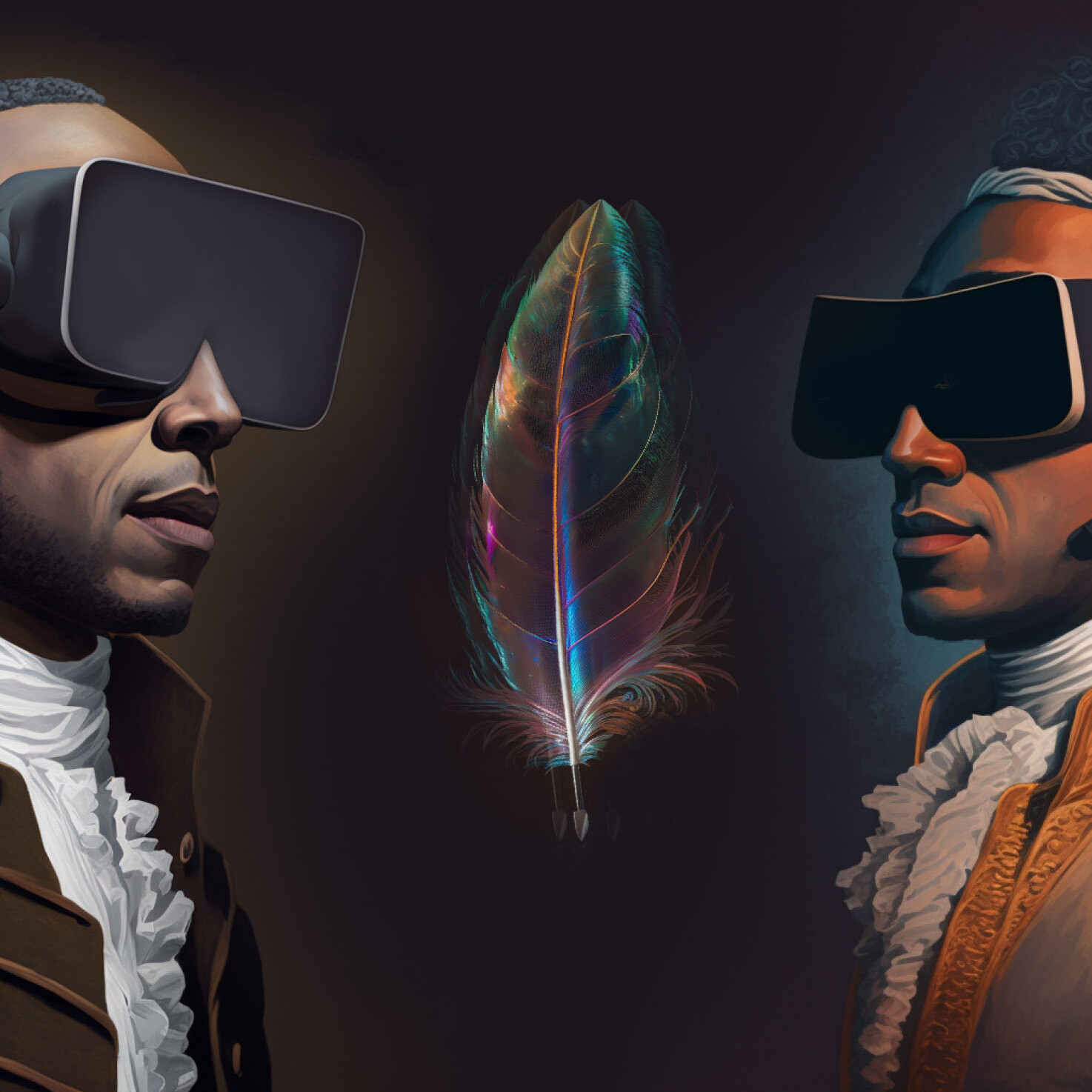The revolutionary anthem of Web3 has fallen as quickly as its initial hype, but there's hope for organizations betting on a future built on blockchain technology.
Out of nowhere, someone numbered the Internet, and everyone’s been talking about it. The term “Web3” skyrocketed in popularity over the past three years, with a remarkable 10x increase in search term volume. As the buzzword suggests, it boldly declares the end of the outdated era of “Web2” and ushers in a new era of decentralized blockchain-based internet, revolutionizing finance, governance, and the idea of ownership. Just as quickly, this space has gone past hype and into financial collapse and outright fraud. Like any emerging technology, Web3 must find ways to restore its footing to emerge from the valley of disillusionment. Organizations are faced with a crucial decision: embrace Web3 and risk being associated with a potential collapse, or wait for stability and risk falling behind the competition in the race for innovation.
As Web3 fortifies its infrastructure, innovators hoping to build the next “killer dapp” (decentralized application) need to look beyond the glitter of new technology and deeper into the people whose journeys are at the heart of these future experiences. With uncertain economic winds ahead, this moment in time presents an opportunity for businesses to consciously calibrate efforts to focus less on the hype around Web3, and more on the long-term value that decentralized systems have to empower human-centered experiences.
Faltering Promises
Countless articles can be written about the merits of Web3, blockchain technology, cryptocurrency, and token-based economics. However, behind these ideals are fundamentally people, and it’s about the trust that you have in those people. At Punchcut, design futurists choose long-term human values over a single technology within our arsenal. Let’s take a look at the core values of Web3 and how they’re currently being realized … or not.
Decentralized
Web3 aims to share ownership among builders and users rather than corporate entities. However, behind the call of decentralization lies a field of experimental apps and untrodden risks for consumers who are brave enough to venture into them. Creators and consumers continue to wait for practical everyday value in decentralized apps and may fail to see why some use cases may be better than today’s popular applications. In addition, a truly decentralized community-driven blockchain experience requires sustained intentionality to counterbalance the natural centralization of power in the founders and VCs.
Permissionless
Web3 aspires to be permissionless – everyone has equal access to participate, no one gets excluded. It promises recognition and reward for anyone who contributes. A closer look reveals a reality that is not quite the ideal. As with many systems, early contributors tend to win the most. While the call to participate is for all, the lack of Web3 onboarding significantly limits the diversity of current adopters. Anyone who is curious quickly discovers a quagmire of unfamiliar technical jargons and lack of clear guidance and value proposition. The steep learning curve to contribute to the decentralized world means that the speed to turn an idea into reality is difficult, similar to the early days of Web 1.0.
Ownable
Web3 promises ownership over digital assets that you can use, trade, or sell within digital economies. But beyond the occasional buzz of an NFT selling for millions, most people are still trying to figure out how to make practical use of these assets. Blockchain-based experiences promise a brand new playground but often come with a slow and painful setup process. Beyond these initial obstacles and trust issues, there’s also ongoing potential for being exploited. Web3 is still stumbling out of its toddler phase.
Secure
Web3 offers to modernize the way personal data is handled by leveraging transparent and decentralized technology. Activities and transactions are recorded on immutable blockchains. However, with reports of Web3 ecosystem losing billions to cryptocurrency fraud in recent years, users are learning the difficult lesson that security infallibility is more than data immutability. Any new technology platform introduces new vulnerabilities, both for the technology and the users of the technology.
Interoperable
Web3 hopes to revolutionize the way digital assets are transferred, offering data portability and interconnectivity across systems. Standardization, like interchangeable parts during the industrial revolution, may be the key, but who’s responsible for making Web3 assets interoperable? And is there sufficient motivation for the collective cooperation required to create, adopt, and maintain these standards? Is it even possible to achieve true interoperability?
Perhaps most glaring is that all of Web3’s most celebrated values seem to speak more to the qualities of the technology than the potential benefits for people. What’s missing from today’s Web3 experiences is real value for consumers beyond financial speculation and fanciful experimentation. While we can make a list of tactical solutions to address each of Web3’s faltering promises, creators should first take a step back and think strategically about ways to participate in the next internet in a more human-centric way. Only by infusing empathy during design can real value creation occur.
A Divided Internet Cannot Stand
The promise of Web3 can only be realized if both current and new companies see value in these new systems and principles. How can brands continue to create value for customers and find new value in emerging paradigms. And is there space for companies to participate without committing to blockchain technology. Just like how today’s online experience includes a blend of read-only and read-write experiences, Web3 should be a blended experience where blockchain is not the only solution, but one of many possible ways to bring value to customers. So what does this mean for companies now? How can the brands of today and the upstarts of tomorrow fulfill the promise of a unified Web3?
Embrace Your Crew
In today’s internet, users can freely contribute to the content of a platform or product, but rarely have a chance to directly participate in the product’s creation or improvement. Companies make decisions behind closed doors, often with more consideration to the bottom line than the needs, wants, and well-being of users. This lack of agency can create a sense of detachment and weak loyalty towards the product and brand. Web3 users will expect to be active participants in the products they use, and to be compensated for their individual contributions to a larger community and body of work. As we prepare for a shift of power from centralized entities to communities of individuals, how might we enable participation, co-creation, and reward individuals for their contributions?
Audius is a decentralized music streaming platform that is owned, operated, and governed by its users through tokens and blockchain technology. Artists are rewarded for their contributions based on the popularity of their tracks, and listeners are rewarded for the popularity of the playlists they curate. Any token-holder can propose changes to the product, which are voted on by the community.
An automobile company in the future could tap into its loyal customer base during its design and production phase to open a channel for feedback and build a passionate community for its next model.
Equip Your People
Currently, data on individual users is gathered, owned, and utilized in a way that removes an individual’s sense of agency. Users often have little control and insight into when, where, and how their information is being used, leading to distrust and resentment towards companies that provide the services essential for modern life. Web3 users will expect radical transparency and better control of personal data and only the companies that act in their best interest will be rewarded with their trust. As we prepare for new responsibilities and expectations for data transparency and stewardship, how might we maximize users’ control of their personal data?
Brave is an open-source web browser in which user data is saved locally on devices and not sent to cloud servers, ensuring it can’t be accessed by third parties. Users can enable anonymously matched ads, rewarding them with a native cryptocurrency, and they can control ad frequency and the amount and type of data they share with advertisers.
A future car buyer could decide how much personal information to share with the dealership and for what duration with full transparency into what personal driving data the car insurance company is able to access.
Elevate with Partnerships
Our current version of the internet defaults to siloed experiences and data incompatibilities that detract not only from the user experience, but from the bottom line of businesses across industries. Users have to repetitively enter personal information for any new service sign-up, and customize settings for new experiences one by one. Web3 users will expect full ownership over a continuous user profile across services, and portability of information between services. As we prepare for this change from the siloed status quo to the true interconnectivity and interoperability of tomorrow, how might novel organizational partnerships unlock more value for users?
Patientory is an app that aggregates a user’s medical record data in a personal wallet. By having all of their health data from providers, health trackers, and lab results in one place, patients have a better understanding of their overall health and are empowered to take action to improve and maintain it.
When a car buyer switches to a new primary car brand, personal car settings could seamlessly update in their new car with minimal driver setup. Behind the scene, car companies participate in an interoperable system that works together by default to ensure customers’ digital assets portability, general product safety, consistent quality and compatibility.
What’s Next
The internet will continue to evolve, with a wide diversity of technologies, blockchain being just one. While the buzz around Web3 helps draw in more innovators and builders, we must not believe it to be a completely separate entity from the internet we know today.
The current economic downturn mirrors Web3’s own course correction after its initial hype. Creators and consumers are treading cautiously, waiting for better blockchain infrastructures. In the race to define the next internet, there’s room for both established and upstart brands to innovate, discover and provide value, and partner together to build experiences that the next generation of internet users will love. Although the path to realizing Web3’s ambitions is progressive, it may arrive sooner than you think, and we have the opportunity to shape its progress to better serve people everywhere. Web4, anyone?
A Punchcut Perspective
Nancy Ku
Contributors: Jay Jansen, Jojo Mendoza, Ilia Savin, Rachel Farn, Carrie Doung, Nick Munro, Nate Cox, Ken Olewiler,
Web3 Lab Group
© Punchcut LLC, All rights reserved.



